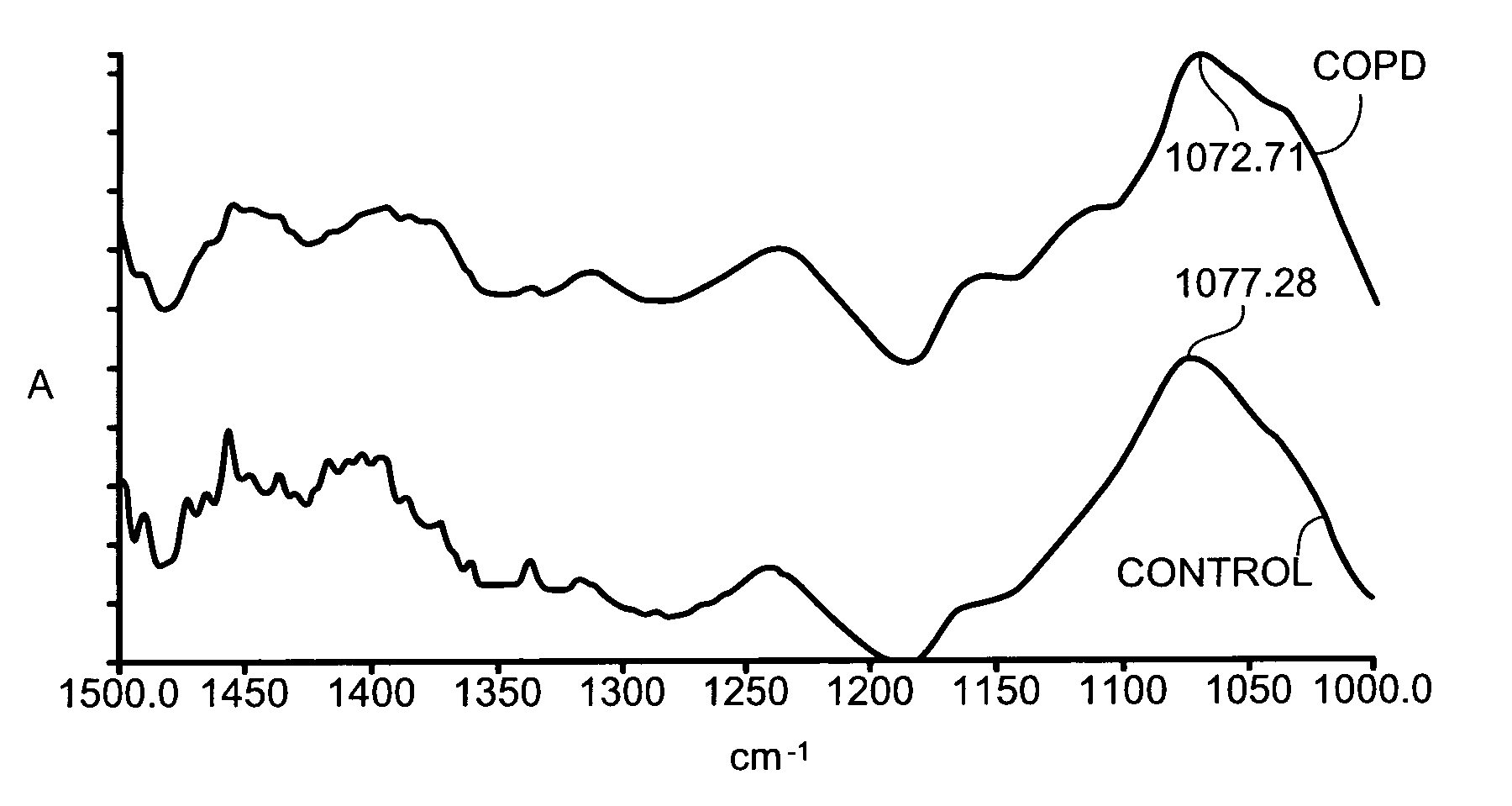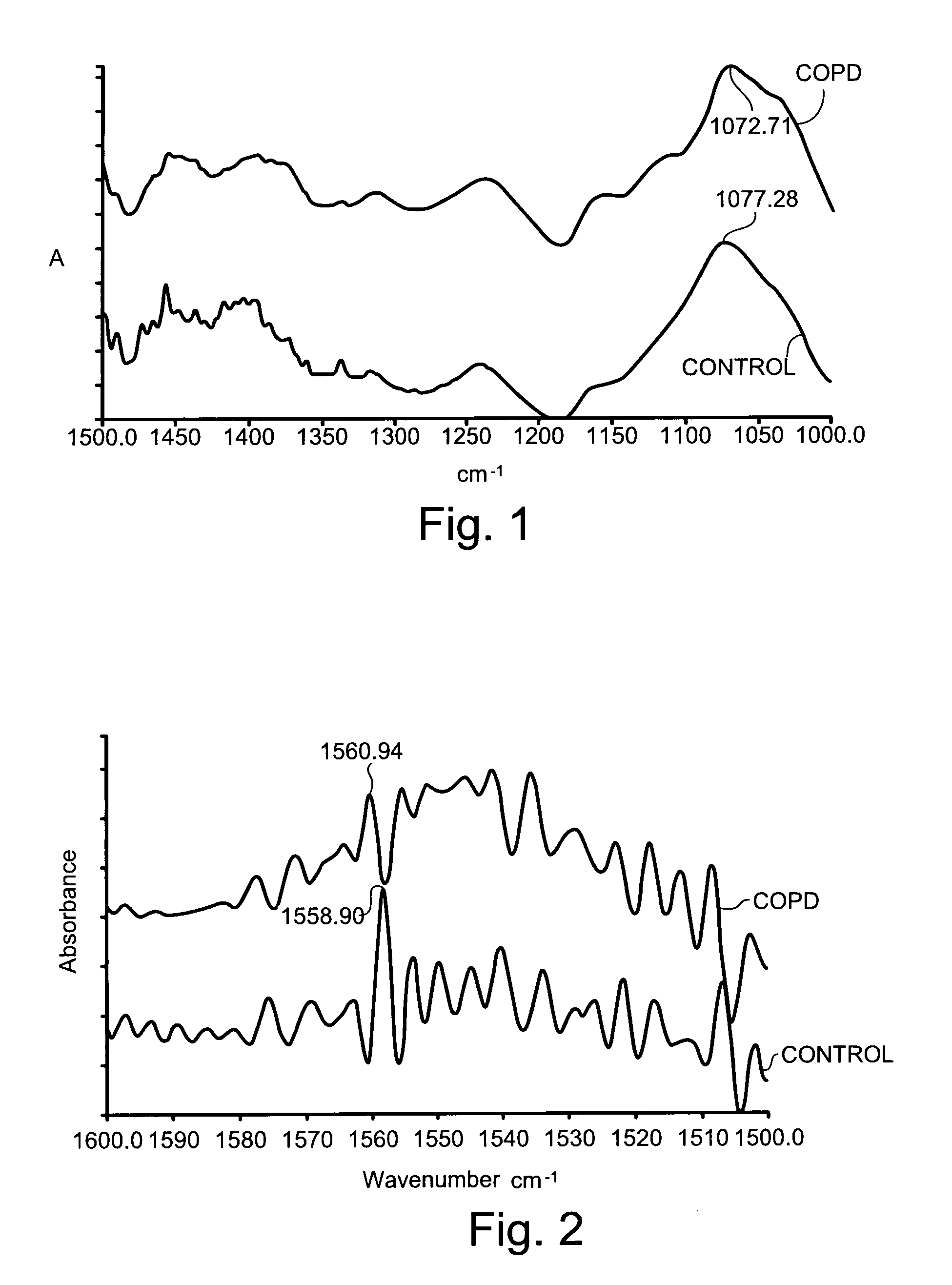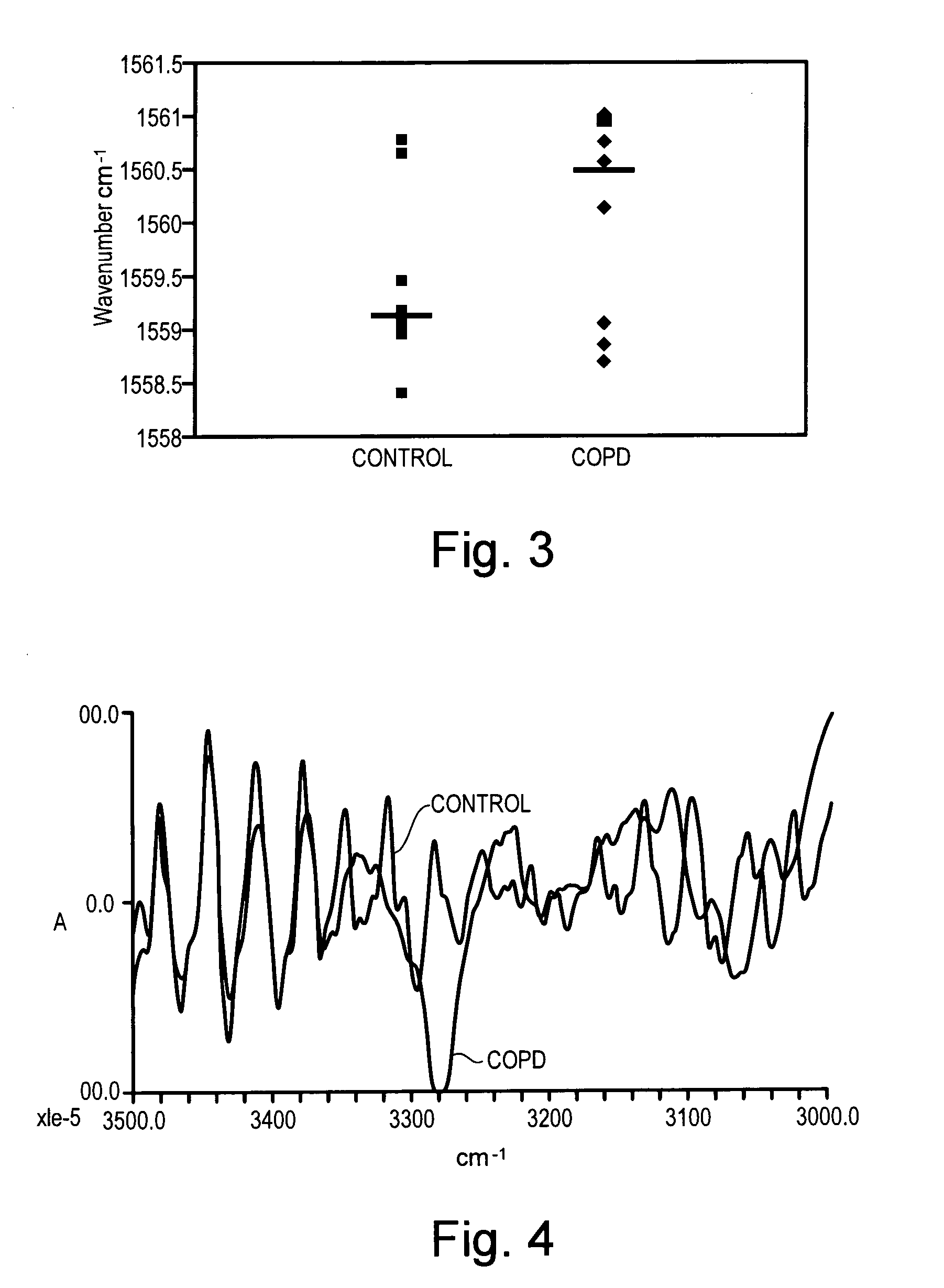COPD determination
a technology pulmonary artery disease, which is applied in the field of methods for determining the status of copd, can solve the problems of copd-related airflow limitation, copd-related symptoms are limited, and copd is a major public health problem, and achieves high performance and portability. robust
- Summary
- Abstract
- Description
- Claims
- Application Information
AI Technical Summary
Benefits of technology
Problems solved by technology
Method used
Image
Examples
Embodiment Construction
Experimental Detail
[0144]Spontaneously expectorated / induced sputum from 15 stable mild to moderate COPD patients with a forced expiratory volume in 1 second (FEV1) of 40% were studied.
[0145]As a control, induced sputum from 15 healthy non smoking volunteers with no significant past / current medical history and normal spirometry were studied. Sputum production was induced using nebulisation of 3% sterile saline solution via a DeVilbiss UltraNeb 2000 nebuliser for 7 minutes, after which any expectorated sputum was collected. Nebulisation was continued for a further 7 minutes and the expectorated sputum collected. Sputum was then analysed using bench-top laboratory-based fourier transform infra-red (FTIR) spectroscopy. Approximately 100 μl of sputum was pipetted onto a Barium Flouride polished window and allowed to dry. FTIR analysis was then preformed.
Apparatus
[0146]FTIR analysis of the sputum was performed using a Spectrum GX FT-IR(Perkin Elmer) which has inbuilt software (Version 4.0...
PUM
| Property | Measurement | Unit |
|---|---|---|
| wavenumber | aaaaa | aaaaa |
| wavenumber | aaaaa | aaaaa |
| wavenumbers | aaaaa | aaaaa |
Abstract
Description
Claims
Application Information
 Login to View More
Login to View More - R&D
- Intellectual Property
- Life Sciences
- Materials
- Tech Scout
- Unparalleled Data Quality
- Higher Quality Content
- 60% Fewer Hallucinations
Browse by: Latest US Patents, China's latest patents, Technical Efficacy Thesaurus, Application Domain, Technology Topic, Popular Technical Reports.
© 2025 PatSnap. All rights reserved.Legal|Privacy policy|Modern Slavery Act Transparency Statement|Sitemap|About US| Contact US: help@patsnap.com



